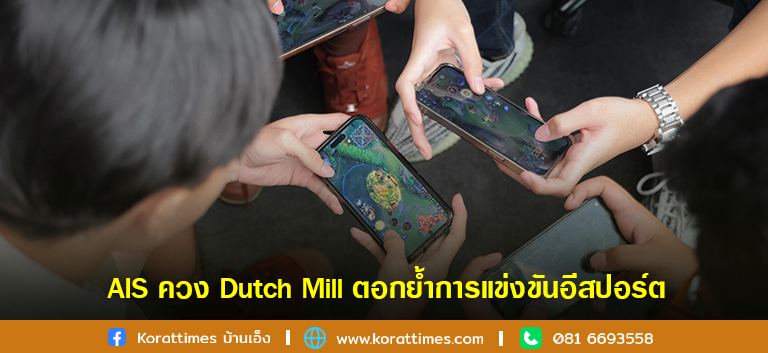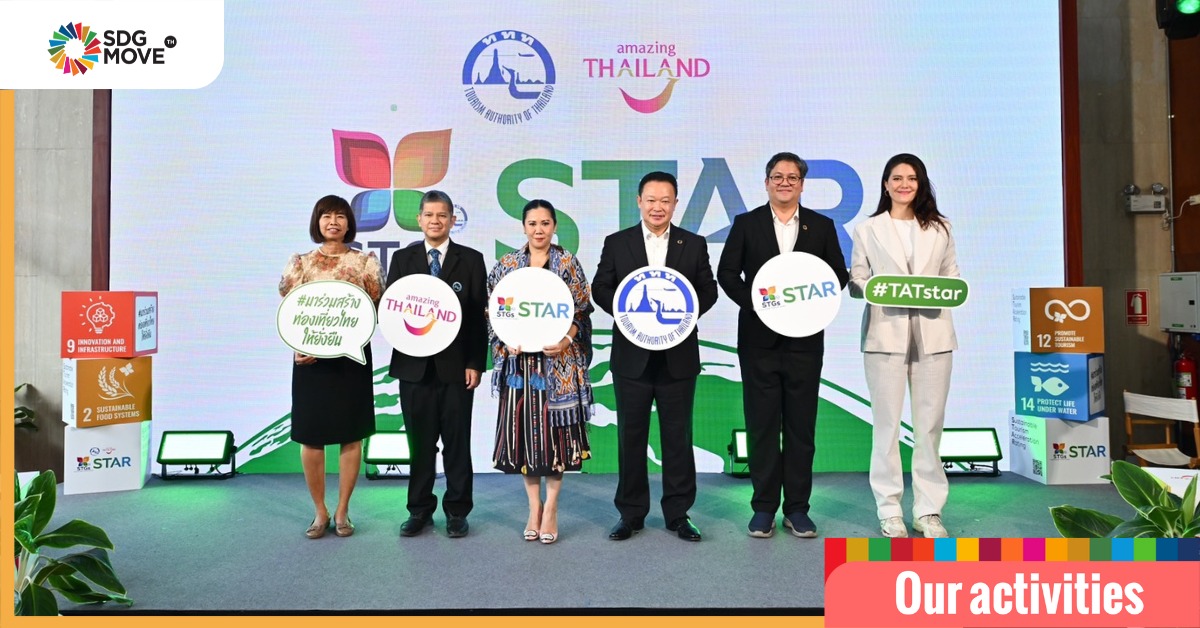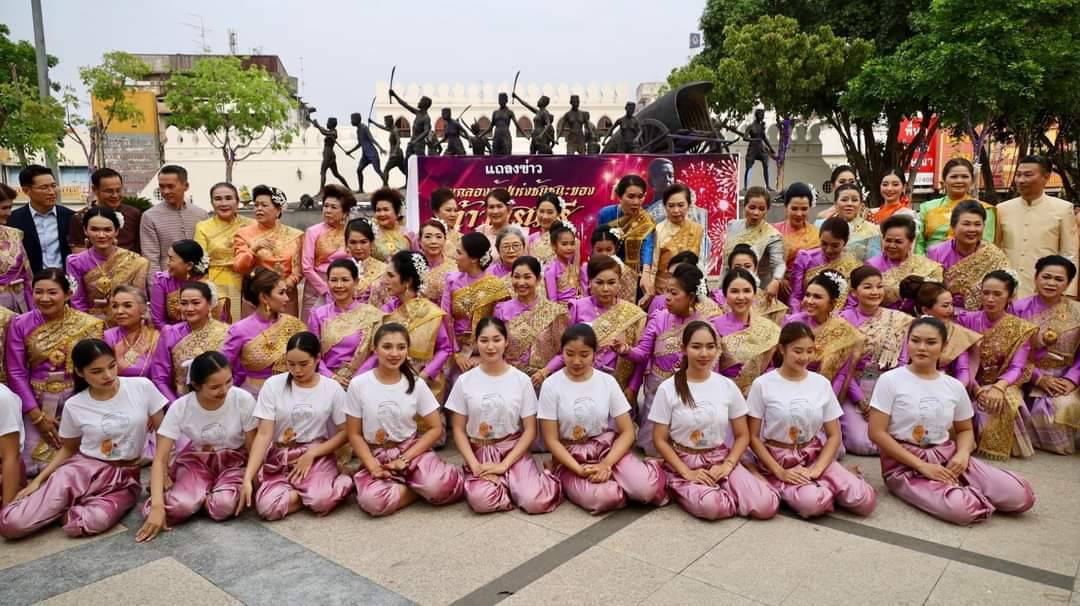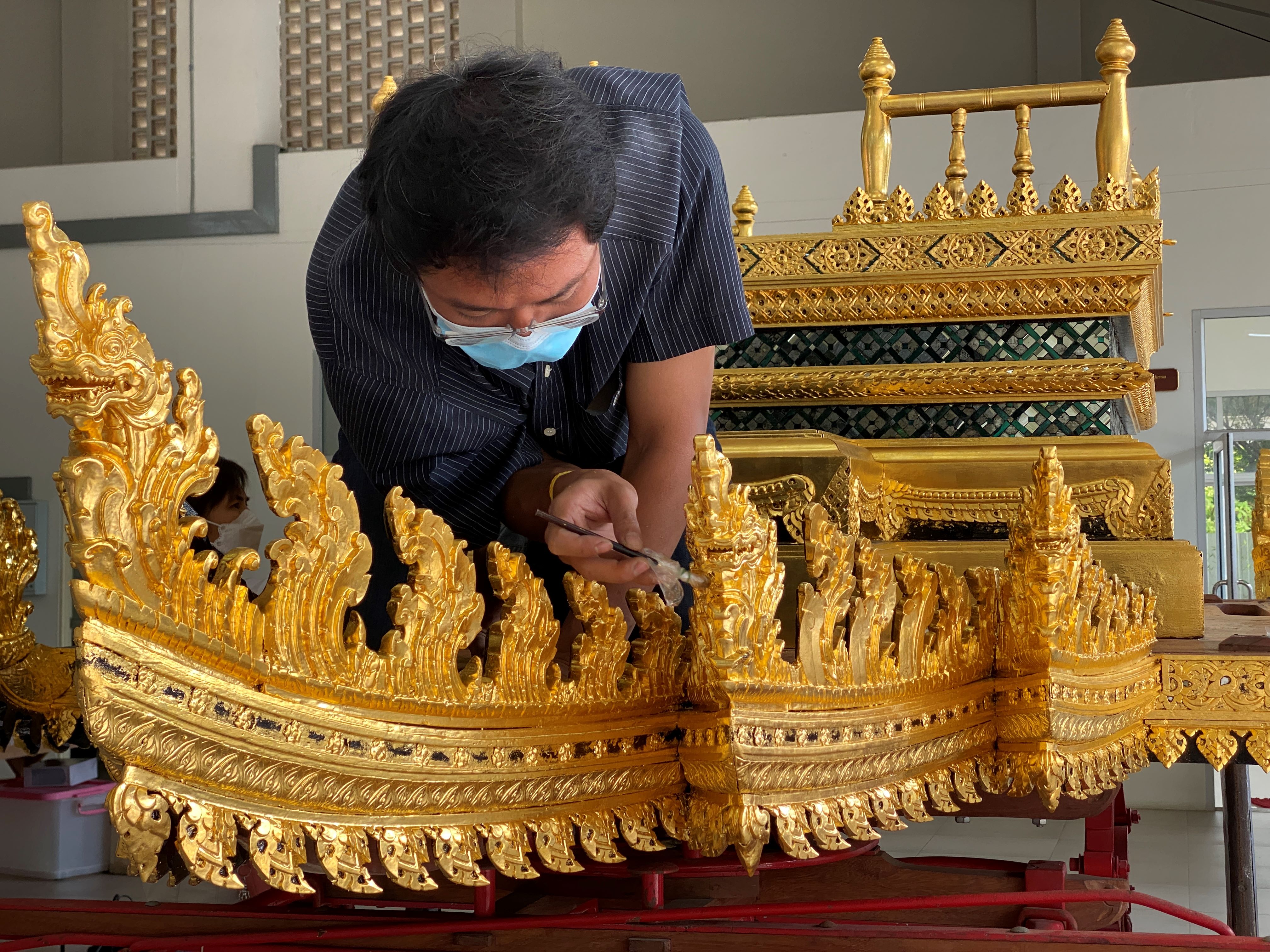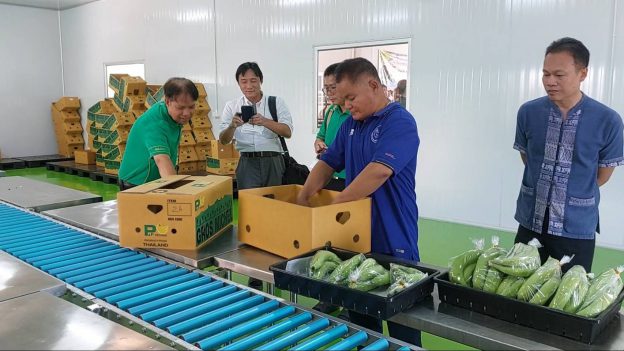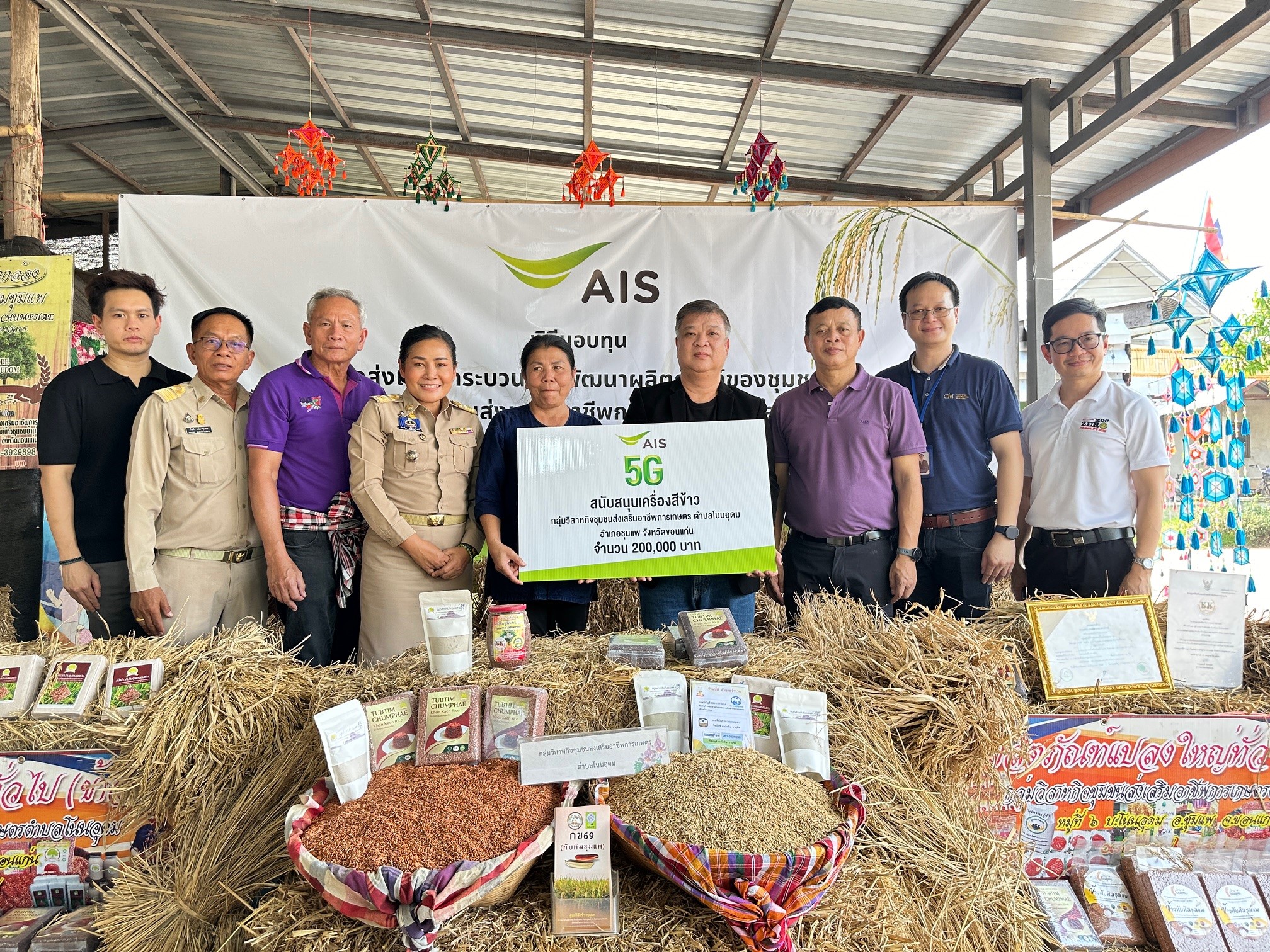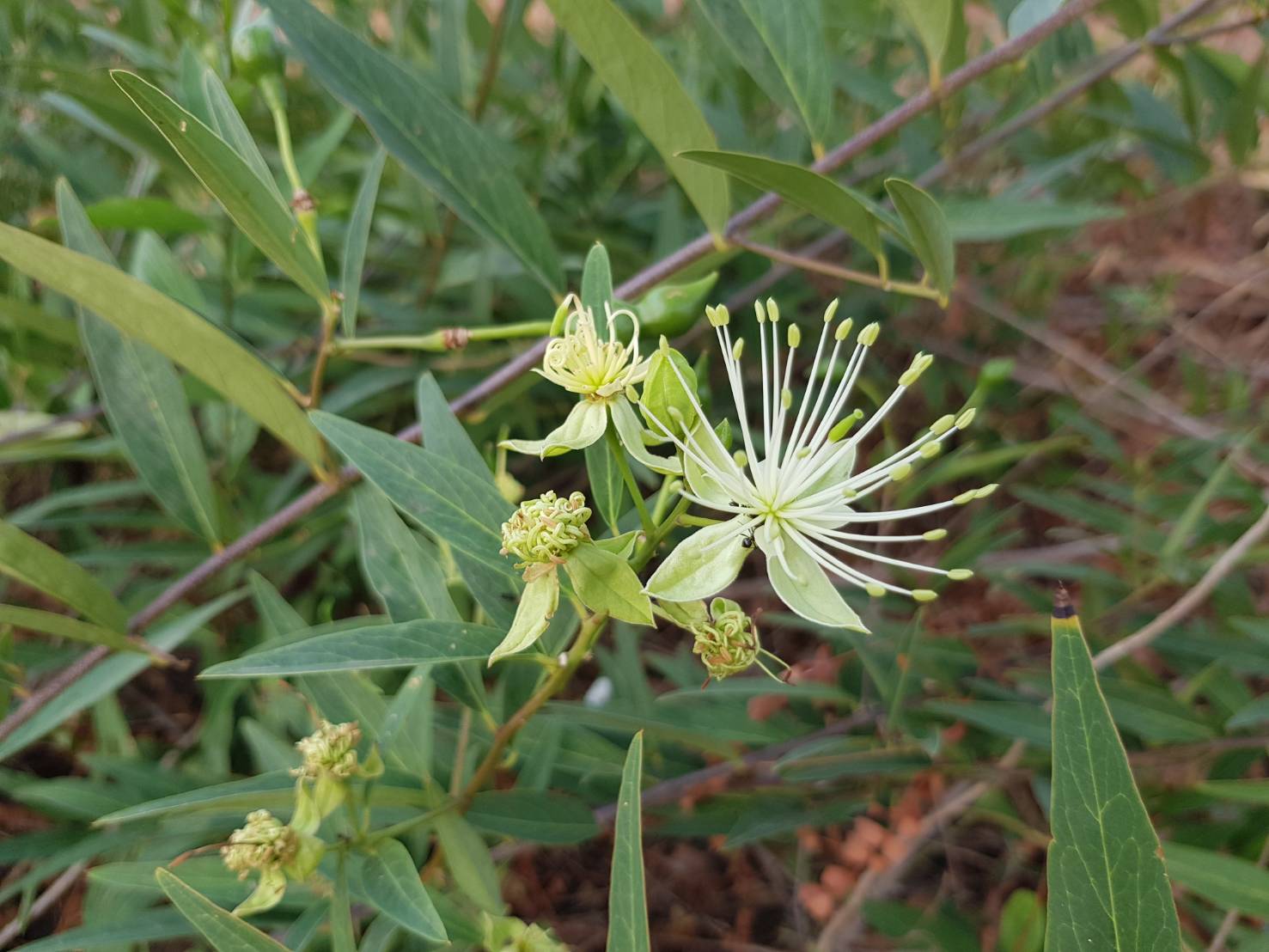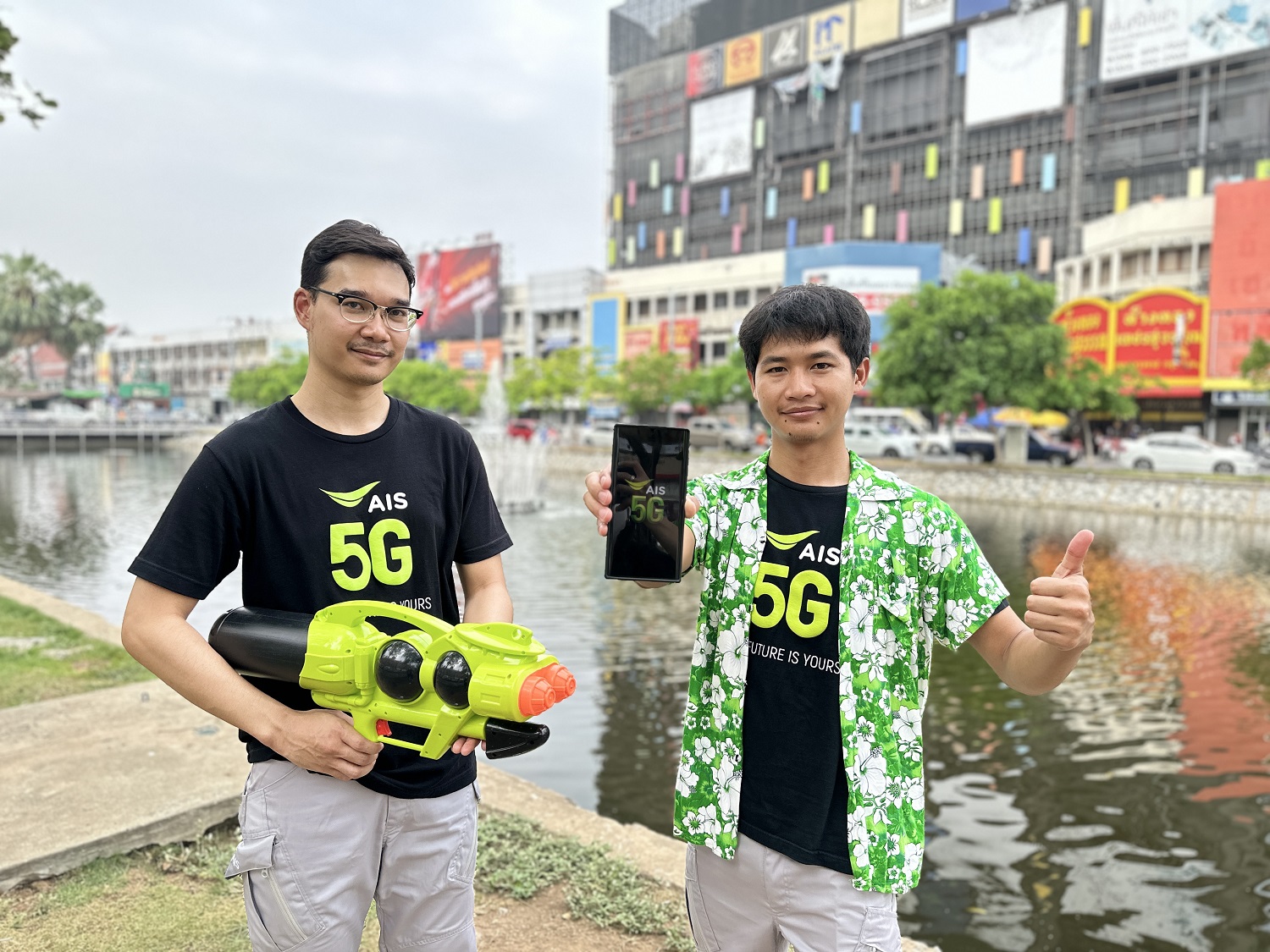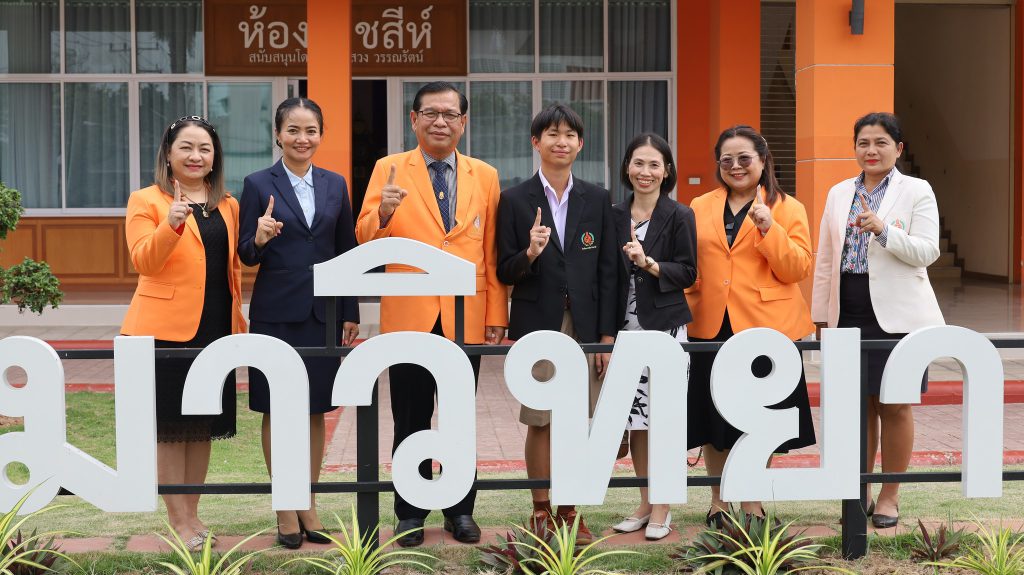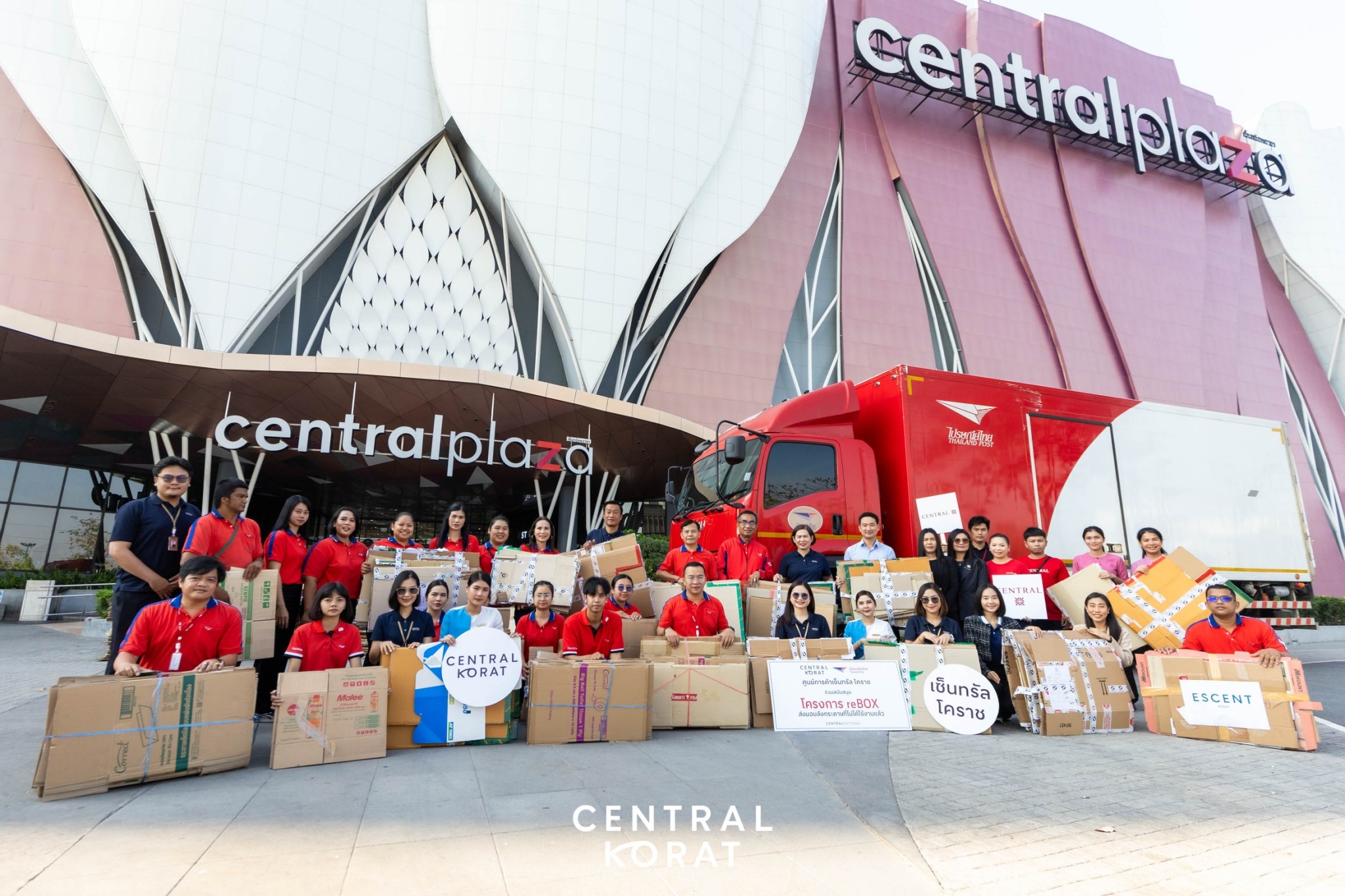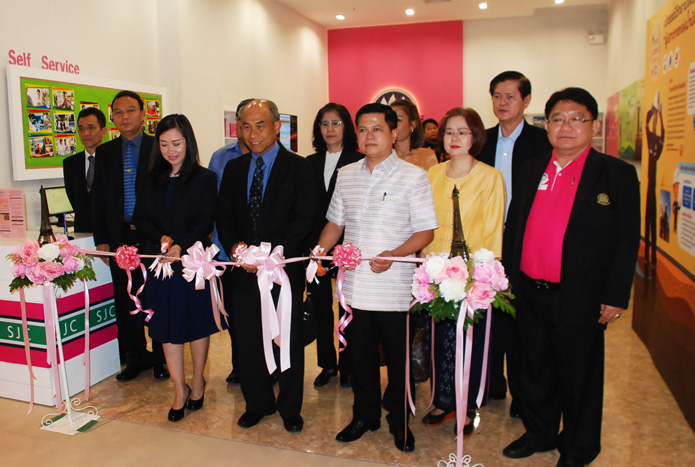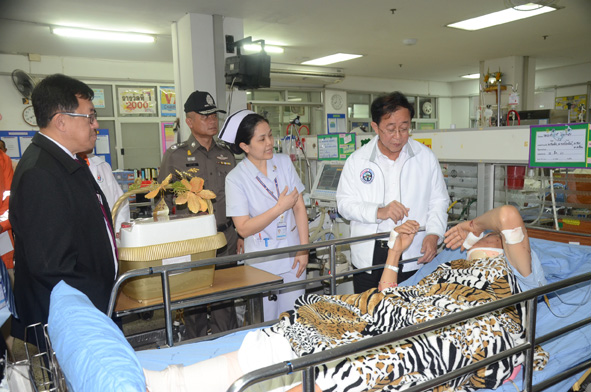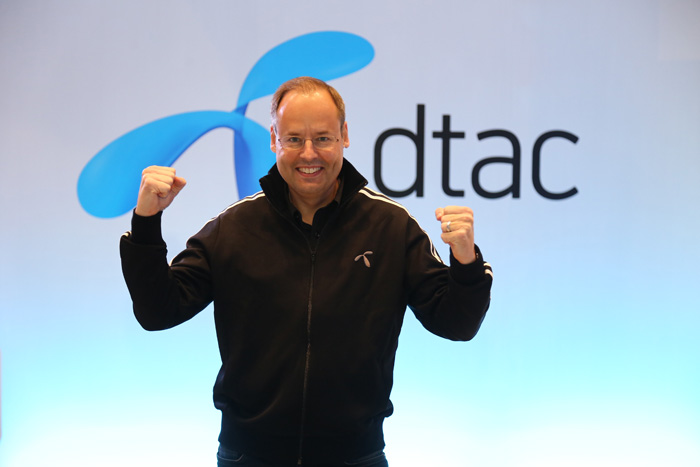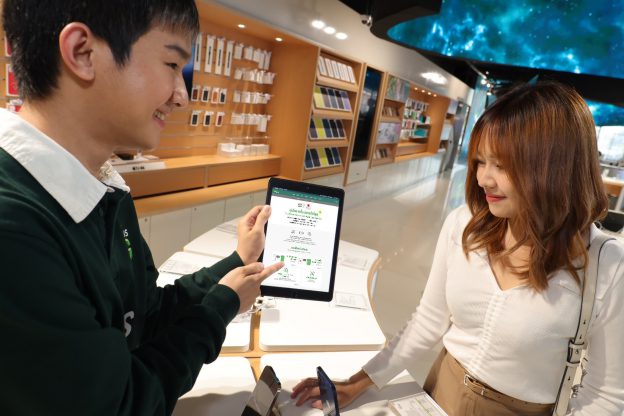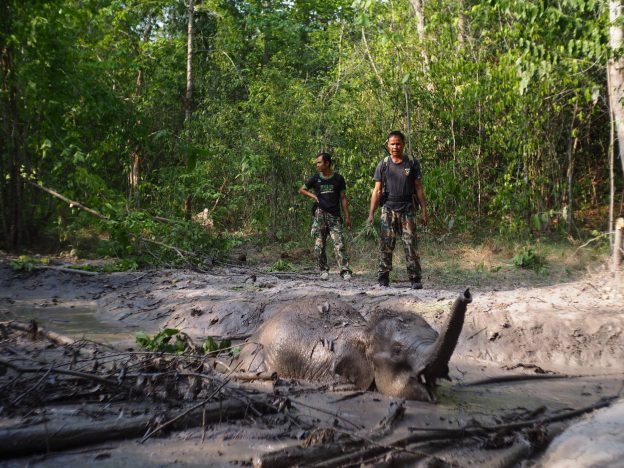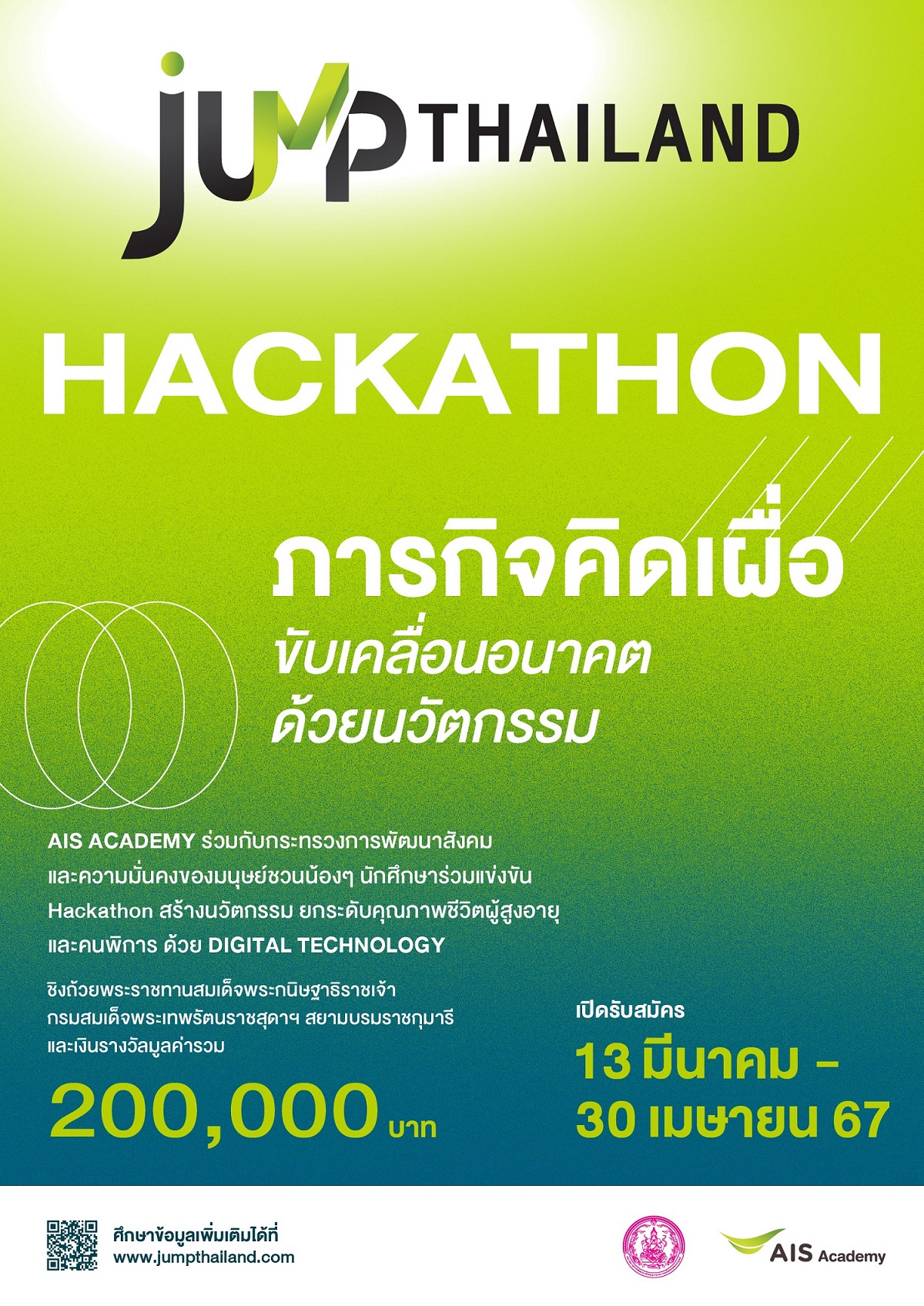ก้าวสู่ 5G ! ดีแทคสร้าง “รูปแบบการใช้งานจริง”
ดีแทคสร้าง “รูปแบบการใช้งานจริง” เพื่อก้าวสู่ 5
โดย อเล็กซานดรา ไรช์ ประธานเจ้าหน้าที่บริหาร
บริษัท โทเทิ่ล แอ็คเซ็ส คอมมูนิเคชั่น จำกัด (มหาชน) หรือดีแทค
การเข้าสู่ศักราชของ 5G จะต้องทำความเข้าใจในศักยภาพการสื่อสารดิจิทัลที่ต่างจากเดิม เพื่อป้องกันการเข้าใจผิด ซึ่งแตกต่างจากการมาของเทคโนโลยีการสื่อสาร 3G และ 4G การมาถึงของ 5G จะไม่ใช่แค่กรณีของผู้ประกอบการโทรคมนาคมที่จะเปลี่ยนอุปกรณ์โครงข่ายของตน หรือผู้ผลิตอุปกรณ์สื่อสารจะเปิดตัวสมาร์ทโฟนรุ่นใหม่เพียงเท่านั้น แต่รวมถึงการมีส่วนร่วมทั้งอุตสาหกรรมสู่การเชื่อมต่อธุรกิจ ไม่เพียงแต่กับผู้บริโภค แต่ยังรวมไปถึงธุรกิจอื่นด้วยวิธีการใหม่ๆ เพื่อให้เกิดประสิทธิภาพและความยั่งยืนสู่กลยุทธ์ 5G ของไทย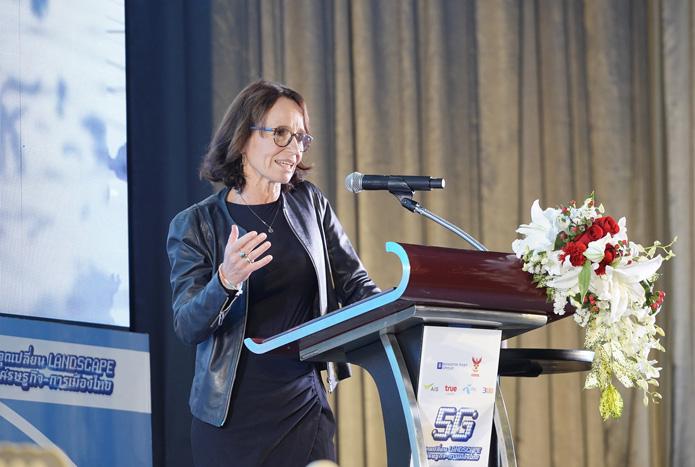 ดีแทคได้ชี้วัดให้เห็นว่าการทำเกษตรกรรมเป็นความสำคัญหลักที่ 5G สามารถปลดล็อกมูลค่ามหาศาลให้แก่ประเทศไทยได้ กรณีนางสาวปคุณา บุญก่อเกื้อ หรือแก้ว เกษตรกรสาวเจ้าของบ้านสวนเมล่อน จังหวัดฉะเชิงเทรา ด้วยโซลูชัน “ฟาร์มแม่นยำ” ซึ่งถูกพัฒนาด้วยเทคโนโลยี Internet of Things เพื่อการทำเกษตรที่มีความแม่นยำที่เราพัฒนาขึ้น ทำให้เธอมีรายได้เพิ่มจากการทำเกษตรแล้วมากกว่าร้อยละ 20 วันนี้เมล่อนจากสวนของคุณแก้วเป็นที่ต้องการของตลาดสูง เช่น การบินไทยได้ติดต่อนำเมล่อนสดที่มาพร้อมกับรสชาติอร่อยไปเสิร์ฟให้กับผู้โดยสารในเที่ยวบิน และในขณะที่สิ่งนี้เกิดขึ้นได้ด้วยเทคโนโลยีเครือข่ายที่มีอยู่แล้ว แต่ 5G จะต้องทำให้คุณแก้วได้ทำผลิตผลจากเกษตรกรรมและมีรายได้ดียิ่งขึ้น
ดีแทคได้ชี้วัดให้เห็นว่าการทำเกษตรกรรมเป็นความสำคัญหลักที่ 5G สามารถปลดล็อกมูลค่ามหาศาลให้แก่ประเทศไทยได้ กรณีนางสาวปคุณา บุญก่อเกื้อ หรือแก้ว เกษตรกรสาวเจ้าของบ้านสวนเมล่อน จังหวัดฉะเชิงเทรา ด้วยโซลูชัน “ฟาร์มแม่นยำ” ซึ่งถูกพัฒนาด้วยเทคโนโลยี Internet of Things เพื่อการทำเกษตรที่มีความแม่นยำที่เราพัฒนาขึ้น ทำให้เธอมีรายได้เพิ่มจากการทำเกษตรแล้วมากกว่าร้อยละ 20 วันนี้เมล่อนจากสวนของคุณแก้วเป็นที่ต้องการของตลาดสูง เช่น การบินไทยได้ติดต่อนำเมล่อนสดที่มาพร้อมกับรสชาติอร่อยไปเสิร์ฟให้กับผู้โดยสารในเที่ยวบิน และในขณะที่สิ่งนี้เกิดขึ้นได้ด้วยเทคโนโลยีเครือข่ายที่มีอยู่แล้ว แต่ 5G จะต้องทำให้คุณแก้วได้ทำผลิตผลจากเกษตรกรรมและมีรายได้ดียิ่งขึ้น
วันนี้ ดีแทคได้พัฒนาและให้บริการเชิงพาณิชย์แอปพลิเคชันฟาร์มเมอร์อินโฟ (Farmer Info) ด้วยเทคโนโลยีAI และ Big Data ทำให้สามารถรวบรวมข้อมูลปัจจัยการเพาะปลูกแบบครบวงจรรายแรกๆ ของประเทศไทย ภายในแอปพลิเคชันประกอบด้วยฟังก์ชั่นต่างๆ เช่น ข้อมูลที่ช่วยให้เกษตรกรรู้สภาวะอากาศที่เปลี่ยนแปลงไปในแต่ละวันในพื้นที่เพาะปลูกของตนเอง ทำให้มีศักยภาพในวิเคราะห์สภาพการเพาะปลูกในแปลงอย่างแม่นยำจากภาพถ่ายดาวเทียม เพื่อจัดการวางแผนเพาะปลูกได้ตรงจุดหรือแก้ไขปัญหาอย่างทันท่วงที ซึ่งดีแทคได้ร่วมมือกับรีคัลท์ สตาร์ตอัพในโครงการดีแทค แอคเซอเลอเรท และบริษัท รักบ้านเกิด พัฒนาขึ้นมา ด้วยเทคโนโลยี5G จะทำให้เราสามารถใช้โดรนขึ้นบินตรวจสอบสภาพอากาศในพื้นที่แปลงเพาะปลูกโดยตรง และใช้วิดีโอสตรีมมิ่ง 360 องศาความละเอียดสูงไปยัง AI ในระบบคลาวด์จะทำให้ประมวลผลข้อมูลได้แม่นยำมากยิ่งขึ้นซึ่งจะเพิ่มคุณภาพการเพาะปลูกและรายได้ให้กับเกษตรกร เช่น แก้ว บ้านสวนเมล่อน
5G ยังเปลี่ยนรูปแบบการขนส่งที่รวดเร็วขึ้นลดค่าใช้จ่ายและเพิ่มความไว้ใจมากขึ้น ตัวอย่างเช่น การติดต่อสื่อสารระหว่างอุปกรณ์ที่ทำได้รวดเร็วและแม่นยำ ด้วยค่าความหน่วงของสัญญาณที่ต่ำ (Ultra-low latencies)และการตอบสนองที่เร็วของโครงข่าย 5G ทำให้ออกแบบโซลูชั่นส์ให้ยานพาหนะหรือรถบรรทุกสามารถสื่อสารระหว่างกันเพื่อเชื่อมต่อตั้งเป็นขบวนวิ่งไปบนทางร่วมกันในระยะใกล้มากขึ้น ส่งผลให้สามารถลดค่าแรงเสียดทานของอากาศในการขับขี่ ทำให้ลดค่าใช้จ่ายเชื้อเพลิงลงถึงร้อยละ 12
จุดเริ่มต้นของความสำเร็จจากบ้านสวนเมล่อนสู่จุดหมายการบินไทย ทำให้ 5G ยิ่งมีความสำคัญ ด้วยอุปกรณ์นับพันล้านชิ้นที่จะถูกเชื่อมต่อสู่โลกออนไลน์ ทำให้โครงข่าย 4G ไม่สามารถตอบสนองได้อย่างพอเพียง ในขณะที่สถานีฐาน 4G แต่ละแห่งจะเชื่อมต่ออุปกรณ์สื่อสารได้ร่วมหมื่น แต่ 5G จะเชื่อมต่ออุปกรณ์สื่อสารนับล้านชิ้นในเวลาเดียวกัน สนามบินในวันพรุ่งนี้จะไม่เหมือนเดิม กระเป๋าเดินทางทุกใบและกล่องขนส่งสินค้าทางอากาศจะได้สามารถระบุตำแหน่งติดตามได้จากอุปกรณ์และเซ็นเซอร์ภายในอาคารสนามบินและเครื่องบิน แน่นอนว่า 5G ไม่เพียงสามารถรองรับอุปกรณ์นับล้านๆ ชิ้นเหล่านี้ แต่ยังใช้พลังงานต่ำมาก ทำให้แบตเตอรี่ในอุปกรณ์กล่องสินค้าสามารถมีอายุการใช้งานยาวนานถึง 10 ปี
การระบุตำแหน่งสินค้าอาหารไม่ใช่แค่บริหารต้นทุนหรือประสิทธิภาพ ด้วยโซลูชันส์ IoT ที่เพิ่มขึ้น ผู้บริโภคสามารถที่จะรู้ได้ว่าอาหารบนจานนั้นมาจากที่ไหน ตัวอย่างที่สามารถเกิดขึ้นได้ เช่น โซลูชั่นส์ระบุตำแหน่งแบบครบวงจรของ 5G จะช่วยออกแบบให้การบินไทยนำเสนอผ่านแอปพลิเคชันให้ผู้โดยสารได้รู้ว่าเมนูเมล่อนที่ถูกเสิร์ฟด้วยรสชาติความสดอร่อยได้ถูกส่งมาจากจังหวัดฉะเชิงเทราตอนตี 5 และแน่นอนว่าถ้าอยากรู้ต่อไปยังคลิกดูข้อมูลที่ถ่ายทอดจากโดรนที่บินเหนือแหล่งเพาะปลูกได้ว่ามาจากที่ไหน
นี่คือการเดินทางจากธุรกิจสู่ธุรกิจและส่งต่อยังผู้บริโภคซึ่งเป็นกระบวนการสำคัญของ 5G นี่คือเหตุผลที่ดีแทคมองว่าต้องมีแผนพัฒนาสู่ 5G ทั้งสองแกนด้วยกัน ทั้งแผนสร้างความแข็งแกร่งให้กับอุตสาหกรรมที่จะใช้ประโยชน์สูงสุดจาก 5G และแผนดำเนินงานทดสอบเทคโนโลยี 5G
ในส่วนของเทคโนโลยี ดีแทคเป็นรายแรกที่การนำเทคโนโลยีโครงข่ายระบบชุมสายเสมือน (Visualized Core Network: VCN) มาดำเนินงาน ซึ่งเป็นเทคโนโลยีทันสมัยที่สุด และรองรับการใช้งาน 5G พร้อมอัปเกรดเทคโนโลยีสู่ 5G ได้ทันที ดีแทคยังเป็นรายแรกในประเทศไทยที่นำเทคโนโลยี Massive MIMO 64T 64R มาให้บริการเชิงพาณิชย์ แน่นอนว่าไม่ใช่แค่ทดสอบกับอุปกรณ์ แต่ยังรองรับสมาร์ทโฟนที่ใช้งานได้จริงอีกด้วย ด้วยช่องสัญญาณรับ-ส่งข้อมูลความเร็วสูงของ Massive MIMO 64T 64R ที่รับส่งได้มากที่สุดในขณะนี้ จะทำให้สถานีฐานที่ติดตั้งจะรองรับการใช้เทคโนโลยี 5G เช่น Beamforming ที่สามารถออกแบบรับ-ส่งชุดสัญญาณหลากหลายทิศทางในเวลาเดียวกัน เพื่อรองรับพื้นที่ใช้งานได้หลายรูปแบบจากเสาต้นเดียวกัน ไม่ว่าจะอยู่มุมตึก หรือรองรับการใช้งานแบบเคลื่อนไหว ดีแทคจึงมีความพร้อมเป็นอย่างยิ่งสำหรับเทคโนโลยี 5G ซึ่งสามารถทำการทดสอบใช้งาน 5G เมื่อได้รับใบอนุญาตจาก กสทช. และเพียงเพิ่มอุปกรณ์บางอย่างติดตั้งให้กับโครงข่ายเท่านั้น
นอกเหนือจากโครงข่ายของดีแทคที่พร้อมรองรับ 5G แล้ว ดีแทคยังเห็นความจำเป็นเร่งด่วนในการสร้างแนวคิดสู่อุตสาหกรรมให้แข็งแกร่ง ซึ่ง 5G สามารถสร้างศักยภาพโดยรวมสู่สังคมไทย ไม่ใช่แค่การพัฒนาสู่เกษตรกรรม ดีแทคยังได้ริเริ่มนำ 5G สู่โครงการสมาร์ทซิตี้ของไทย ด้วยการพร้อมสนับสนุนจากประสบการณ์ของเทเลนอร์ที่เป็นผู้รับผิดชอบโครงการ 5G ในภาคพื้นยุโรป และได้เริ่มทดสอบ 5G ที่เมืองคองส์เบิร์ก ประเทศนอร์เวย์ ในรูปแบบโครงข่ายอินเทอร์เน็ตความเร็วสูง เครือข่ายแยกส่วน (Network Slicing) ยานพาหนะไร้คนขับ และระบบการแพทย์ทางไกล
เราเชื่อมั่นว่าดีแทคจะเป็นผู้นำสู่การทดสอบในโครงการต่างๆ ของประเทศไทย เมื่อเร็วๆ นี้ ดีแทคและสำนักงานส่งเสริมเศรษฐกิจดิจิทัล (ดีป้า)ได้ลงนามความร่วมมือเพื่อพัฒนาระบบแจ้งพิกัดความแม่นยำของการระบุตำแหน่งด้วยเทคโนโลยี GNSS RTK เพื่อสนับสนุนสู่บริการ 5G โดยโครงการนี้ได้เริ่มทดลองปรับปรุงค่าส่งสัญญาณ 200 แห่งซึ่งมีพิกัดในสมาร์ทซิตี้ เมืองอัจฉริยะ ของไทยทั้ง 7 จังหวัด เช่น กรุงเทพ ภูเก็ต ชลบุรี ระยอง เพราะสมาร์ทซิตี้เป็นเมืองที่ใช้นำร่องในการทดลองใช้งานดิจิทัลรูปแบบใหม่ จึงต้องใช้ความแม่นยำสูงในการแสดงชุดพิกัดข้อมูลและต่อยอดสู่นวัตกรรม 5G นอกจากนั้นดีแทคได้นำ IoT สู่มาตรวัดอัจฉริยะ (Smart meter) จำนวน 8,000 แห่ง และการระบุพิกัดติดตามยานพาหนะ 100,000 คัน โดยในช่วงไตรมาสแรกของปี 2562 ดีแทคจะให้บริการสวิตช์บอร์ดอัจฉริยะ (Intelligent power switchboards)
การที่จะนำประเทศไทยสู่โครงสร้างพื้นฐานยุค 5G จะต้องใช้งบประมาณที่สูงมาก เรารู้สึกยินดีที่ท่านรัฐมนตรีกระทรวงดิจิทัลเพื่อเศรษฐกิจและสังคม(ดีอี) จะส่งเสริมให้มีโครงสร้างพื้นฐานโทรคมนาคมร่วมกัน (Infrastructure sharing) ซึ่งคาดว่าจะสามารถลดงบประมาณค่าใช้จ่ายในการสร้างโครงข่าย 5G ได้ประมาณร้อยละ 40 แม้ว่าการใช้โครงสร้างพื้นฐานโทรคมนาคมร่วมกันเพียงอย่างเดียวจะยังไม่เพียงพอที่จะสนับสนุนความต้องการในการขยายเสาสัญญาณ 5G ที่ต้องลงทุนเพิ่มอย่างมาก ในขณะเดียวกันการจัดสรรคลื่นความถี่และการกำหนดราคาจะต้องนำมาพิจารณาทบทวนเพื่อส่งเสริมสู่ศักยภาพ 5G
เราเชื่อว่านี่คือโอกาสสำคัญสำหรับความร่วมมือระหว่างภาครัฐกับเอกชนในการเป็นพันธมิตรร่วมกัน โดยภาครัฐดูแลโครงสร้างพื้นฐาน 5G และผู้ประกอบการเอกชนดูแลการทำตลาดและให้บริการต่างๆ จากโครงข่าย นอกจากนั้นภาครัฐน่าจะสนับสนุนเปิดให้เข้าถึงการใช้งานได้ฟรีในพื้นที่สาธารณะ และลดความซับซ้อนในการขออนุญาตการตั้งเสาสัญญาณใหม่ นอกจากนั้นน่าจะถึงเวลาที่จะมีแผนยุติการให้บริการ 2G ร่วมกัน เพราะการให้บริการทั้ง 2G, 3G, 4G และ 5G พร้อมกันทั้งหมดจะเกิดความยุ่งยากในการใช้บริการและมีค่าใช้จ่ายสูง
เรามั่นใจว่ารัฐบาลและ สำนักงาน กสทช. สามารถลดอุปสรรคต่างๆ ที่จะนำไปสู่ 5G สำหรับการพัฒนาสู่ 5Gอย่างยั่งยืนนั้นประเทศไทยยังต้องการคลื่นความถี่เพิ่มขึ้นและอุปกรณ์ในการทดสอบ 5G ทั้งนี้ ดีแทคมุ่งมั่นที่จะสร้างแผนงานสู่ 5G อย่างยั่งยืนโดยคำนึงถึงความสำคัญในการทำงานร่วมกันของทุกฝ่าย ทั้งรัฐบาล ผู้ประกอบการ ชุมชนท้องถิ่น และคู่ค้าในอุตสาหกรรม ดีแทคมีเทคโนโลยีการสื่อสาร ประสบการณ์ และความเชี่ยวชาญ ที่พร้อมจะนำคนไทยสู่ความยั่งยืนของยุค 5G
dtac is building the uses cases that will power 5G tomorrow
ALEXANDRA REICH, CEO of Total Access Communication PLC or dtac
KEYNOTE ADDRESS – NOV 19, 2018
The full potential of 5G is still hugely misunderstood. Unlike 3G and 4G, 5G’s advent won’t simply be a case of telecom operators upgrading their networks and device makers rolling out new phones. To be effective and sustainable, Thailand’s 5G strategy must engage entire industries, connecting businesses not only to consumers but also to other businesses, in entirely new ways.
dtac has identified farming as a key industry where 5G can unlock tremendous value for Thailand. For Kaew, a young woman in Chachoengsao, the IoT-based dtac Smart Farmer solution has already increased her revenue by over 20 percent. Today, the melons from Kaew’s farm are in such high demand that even THAI airways serves them on its flights. And while all this was achieved with existing network technology, 5G could take Kaew even further.
Today, the dtac Farmer Info app allows farmers to consult hyperlocal weather information and high-resolution satellite images of their plots, both of which are provided by dtac accelerate startup Ricult. With 5G wireless broadband, Ricult could go even further, flying a drone directly to a farm, and streaming high-resolution 360-degree video to an AI in the cloud. This in turn could allow much more advanced recommendations for farmers like Kaew, a further improvement in her yields and revenue.
5G would also transform how produce is transported, offering faster delivery, lower costs and more reliability. For example, the ultra-low latencies on 5G networks allow vehicles to communicate with one another to form platoons that run in close formation. This alone can reduce fuel costs by 12 percent.
To accurately track a crate from its origin at Kaew’s farm to its destination on a THAI Airways flight, 5G is equally critical. With billions of connected devices coming online in the coming years, 4G sites will not be able to keep up. Whereas a single 4G site can connect to 10,000 devices at a time, 5G allows one million connections per site. In tomorrow’s airports, every single piece of luggage will be tracked, every crate of produce, plus swarms of smart meters and sensors on planes and buildings alike. 5G can not only support these millions of devices, but it does so with very low electrical consumption, allowing the battery in a smart crate of melons to last 10 years, instead of one.
Tracking our food isn’t just a question of costs and efficiency either. With the rise of IoT solutions, consumers will increasingly demand to know exactly where their food is coming from. End-to-end 5G tracking solutions would allow THAI Airways to present its menu in an app that confidently assures you that your delicious melon left Chachoengsao this morning at 5am. And why not even tap into a live feed of the drones hovering above the farm if you’re curious to see exactly where your melon came from?
This journey, from business to business to consumer, is the very essence of 5G. And this is why dtac sees a need for two 5G roadmaps. One path must chart the how Thailand will build robust industry verticals that can genuinely benefit from 5G. The other path is to build and test the necessary technology powering 5G.
In terms of technology, dtac was the first to roll-out a virtual core network in Thailand, and that network is currently the most advanced there is. It can be upgraded to 5G tomorrow with a simple software update. dtac is also the first and only operator to operate massive MIMO antennas commercially. With arrays of 64×64 antennas, the largest ever used in Thailand, these base stations are capable of some of the most advanced 5G techniques, such as beamforming, which can point signals at individual devices, bounce them off walls to reach behind buildings, or even follow rapidly moving vehicles. dtac is therefore very much ready for 5G, and we will conduct further 5G trials once we obtain the necessary licenses from NBTC and some additional equipment from our vendors.
But beyond our network, we also see a pressing need to build robust industry verticals in which 5G can create value for all of Thai society. In addition to agriculture, we have taken a lead in Smart City applications. In that domain, we benefit from the experience and support of Telenor, which is leading the pan-European 5G project across four countries. In Kongsberg, Norway, Telenor has already begun a full-fledged 5G pilot, with mobile broadband, network slicing, autonomous vehicles and remote health services.
We believe dtac is ideally positioned to coordinate a similar project in Thailand. We just signed an MOU with DEPA for 200 base stations offering highly accurate geo-localization in seven smart cities such as Rayong, Chonburi and Phuket. And we have a very wide IoT base to build on, with 80,000 smart meters and 100,000 vehicles in fleet management. In Q1 2019, we will also launch intelligent power switchboards.
Despite these efforts, the reality remains that building Thailand’s 5G infrastructure will be incredibly expensive. We were very happy to hear the Ministry of Digital Economy and Society promote infrastructure sharing, which the ministry expects could save 40 percent of 5G roll-out costs. But infrastructure sharing alone won’t be enough to support the massive infrastructure investments 5G will require. In particular, spectrum availability and pricing will need to be carefully reviewed so as to promote 5G adoption, rather than cripple it.
We also believe there is a fantastic opportunity for private-public partnerships where 5G infrastructure is provided by a state-owned enterprise while operators run and market the services running on that network. In addition, the government should also provide free access to public sites, and greatly simplify the current processes to launch new sites. And it’s also time to talk about the sunset of 2G. Operating 2G, 3G, 4G and 5G simultaneously would simply be too complex and too expensive.
We’re confident NBTC and the government can fix these barriers. But to build a sustainable case for 5G in Thailand, it will take more than spectrum and 5G equipment tests. dtac is committed to a sustainable 5G roadmap that promotes genuine collaboration at every level: between operators, with the government, with local communities and with industry partners. dtac has the technology, the experience and the expertise. And we are ready to accompany Thai people on a sustainable path to 5G.
เรื่องที่เกี่ยวข้อง
-
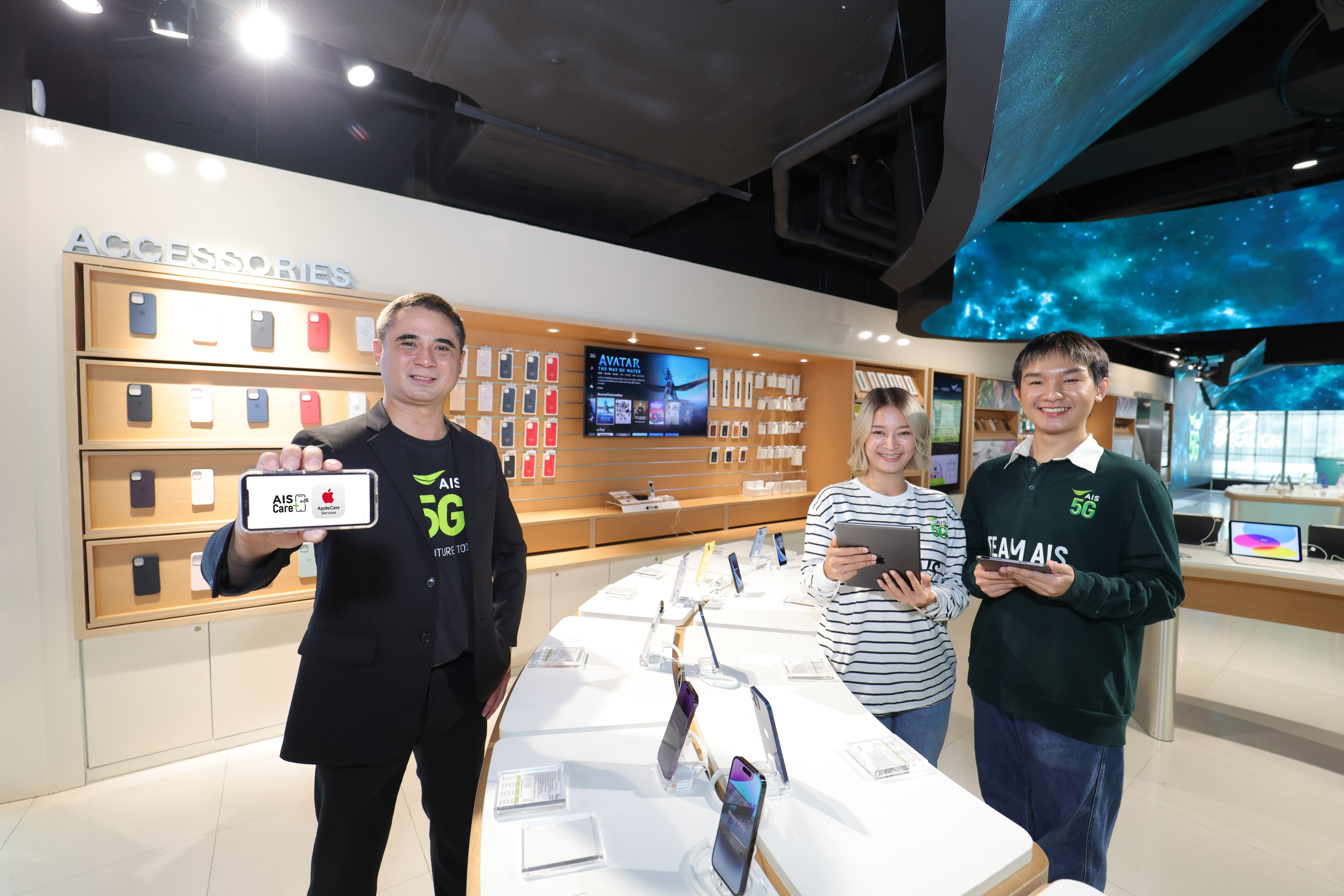 AIS จับมือ Apple ร่วมให้บริการ AIS Care+ with AppleCare Services รายแรกในเอเชียตะวันออกเฉียงใต้...
AIS จับมือ Apple ร่วมให้บริการ AIS Care+ with AppleCare Services รายแรกในเอเชียตะวันออกเฉียงใต้...
-
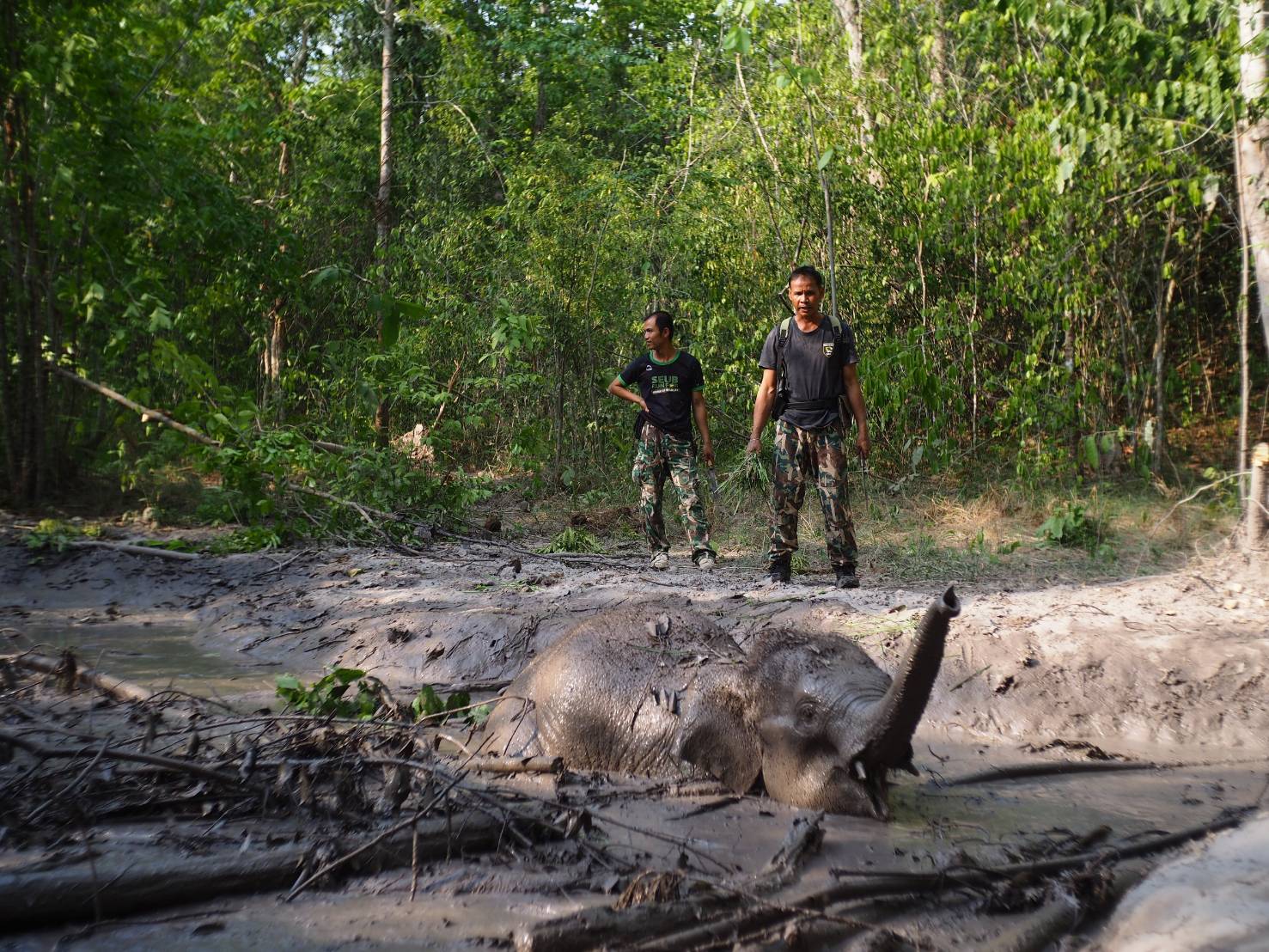 กลับสู่อ้อมอกแม่! ระดมเจ้าหน้าที่ทับลาน ช่วยชีวิตลูกช้างตกบ่อโคลน 2 วันขึ้นมาอย่างทุลักทุเลแต่ปลอดภั...
กลับสู่อ้อมอกแม่! ระดมเจ้าหน้าที่ทับลาน ช่วยชีวิตลูกช้างตกบ่อโคลน 2 วันขึ้นมาอย่างทุลักทุเลแต่ปลอดภั...
-
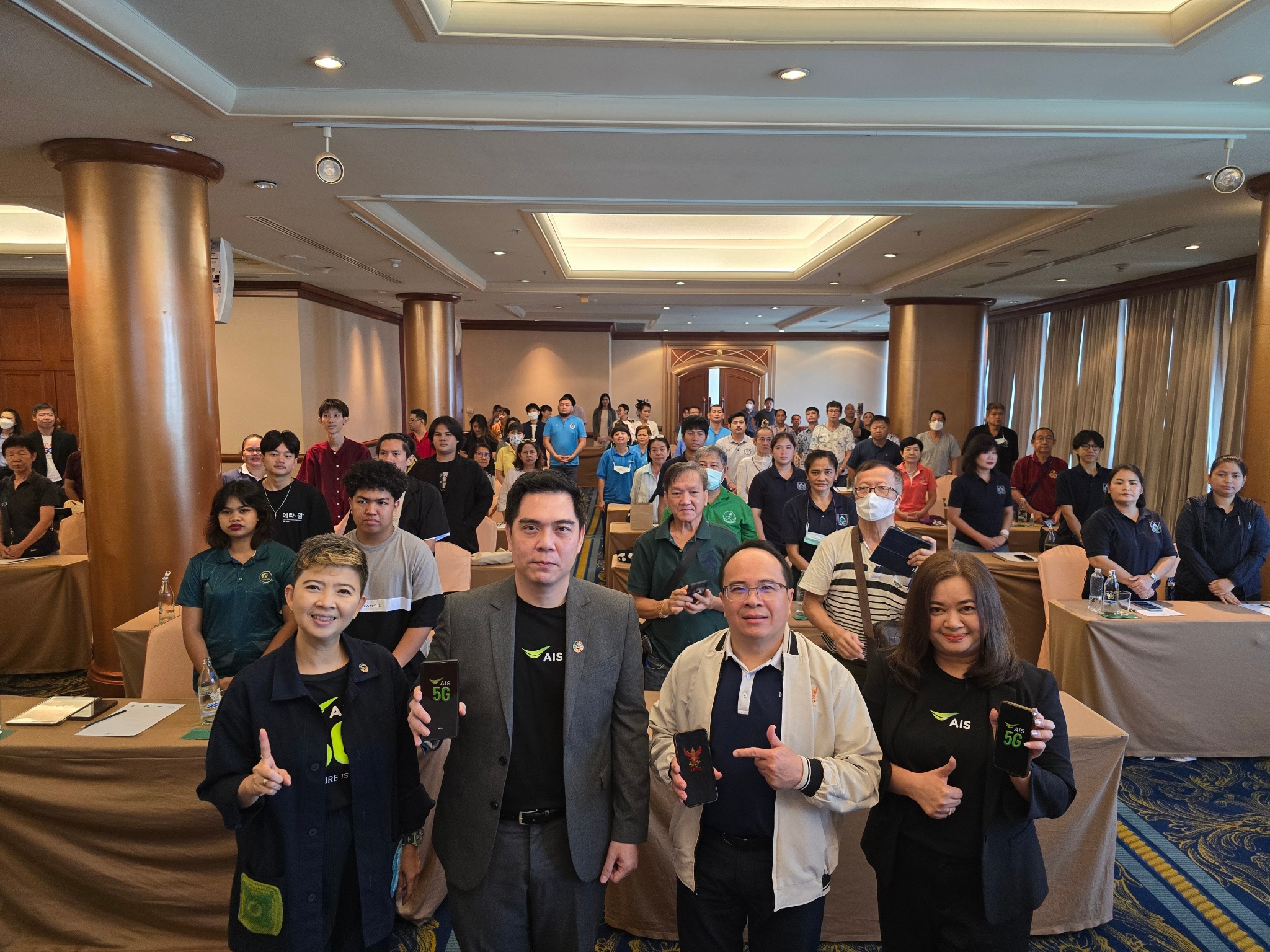 เอไอเอส จับมือ กสทช. ดูแลผู้พิการรอบด้าน ตอกย้ำดิจิทัลเป็นหัวใจการสร้างความเท่าเทียมแก่ทุกกลุ่ม...
เอไอเอส จับมือ กสทช. ดูแลผู้พิการรอบด้าน ตอกย้ำดิจิทัลเป็นหัวใจการสร้างความเท่าเทียมแก่ทุกกลุ่ม...
-
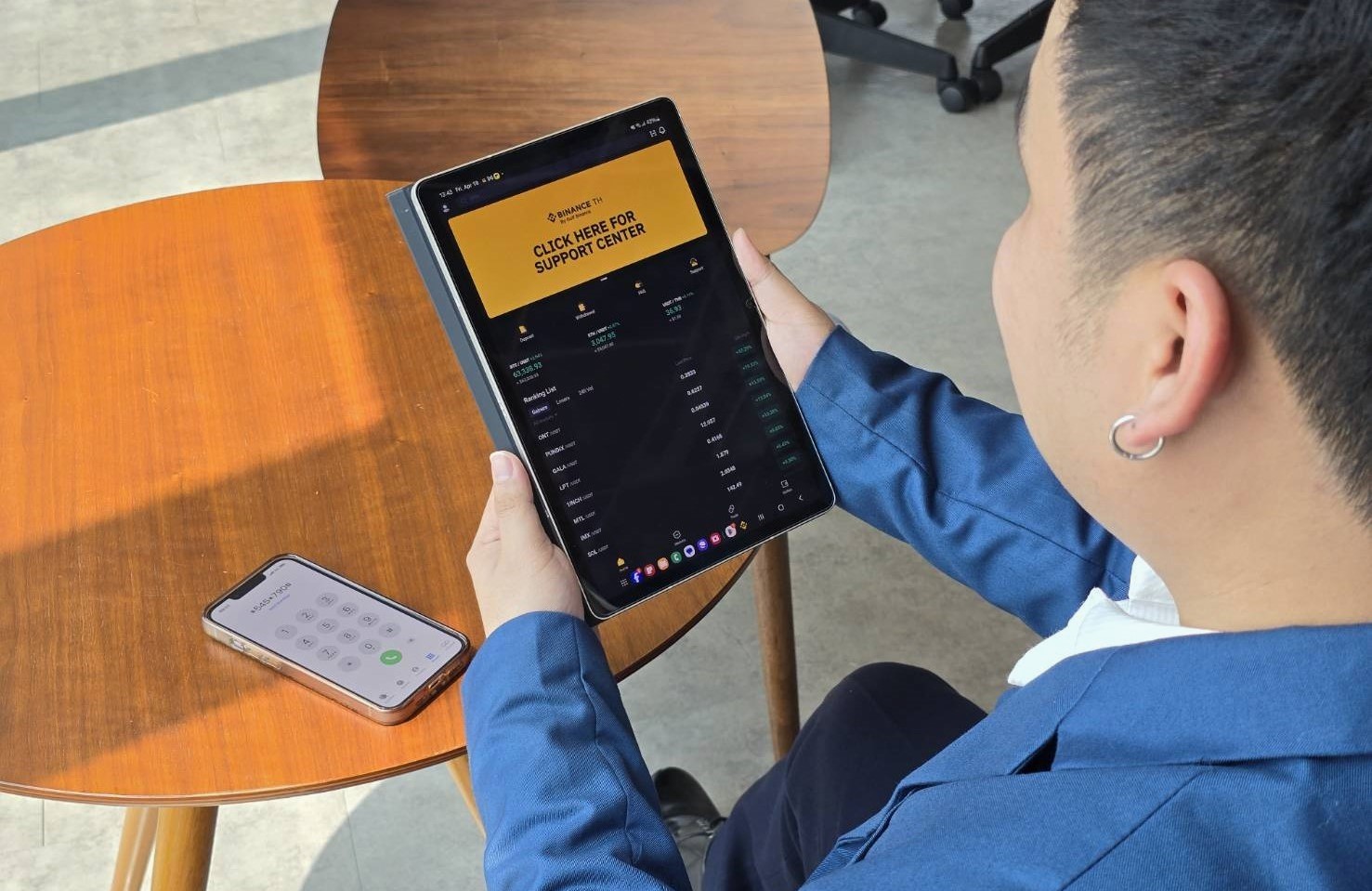 AIS จับมือ Gulf Binance จับเทรนด์สินทรัพย์ดิจิทัล มอบสิทธิพิเศษสำหรับลูกค้า AIS รายเดือนเท่านั้นเปิด...
AIS จับมือ Gulf Binance จับเทรนด์สินทรัพย์ดิจิทัล มอบสิทธิพิเศษสำหรับลูกค้า AIS รายเดือนเท่านั้นเปิด...
-
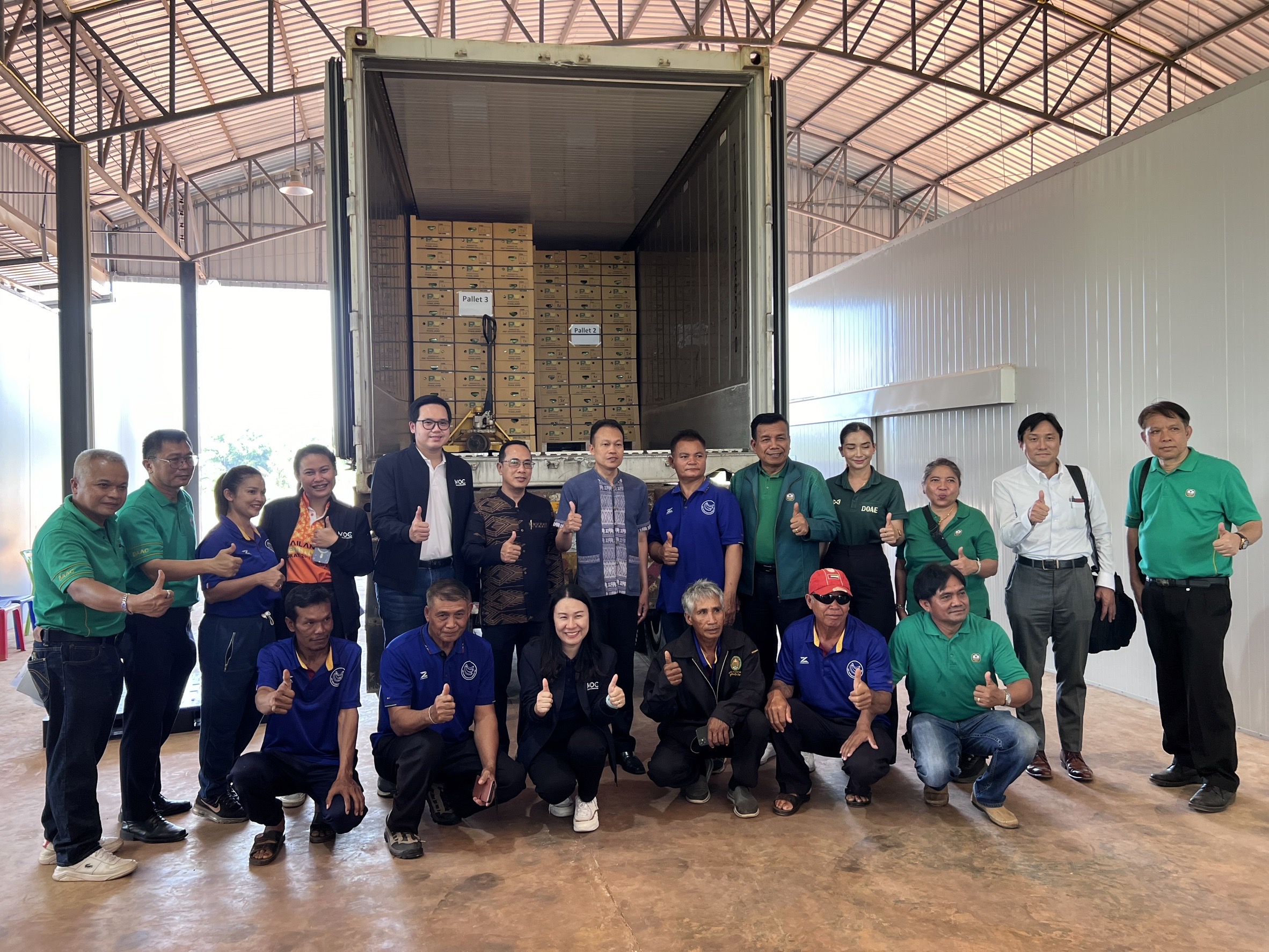 ส่งล็อตแรก!่”กล้วยหอมทอง”โคราชส่งขายญี่ปุ่นแล้ว รมช.พาณิชย์สั่งทีมพาณิชย์เร่งดันส่งออกเพ...
ส่งล็อตแรก!่”กล้วยหอมทอง”โคราชส่งขายญี่ปุ่นแล้ว รมช.พาณิชย์สั่งทีมพาณิชย์เร่งดันส่งออกเพ...






